How to Get Your First 100 Customers
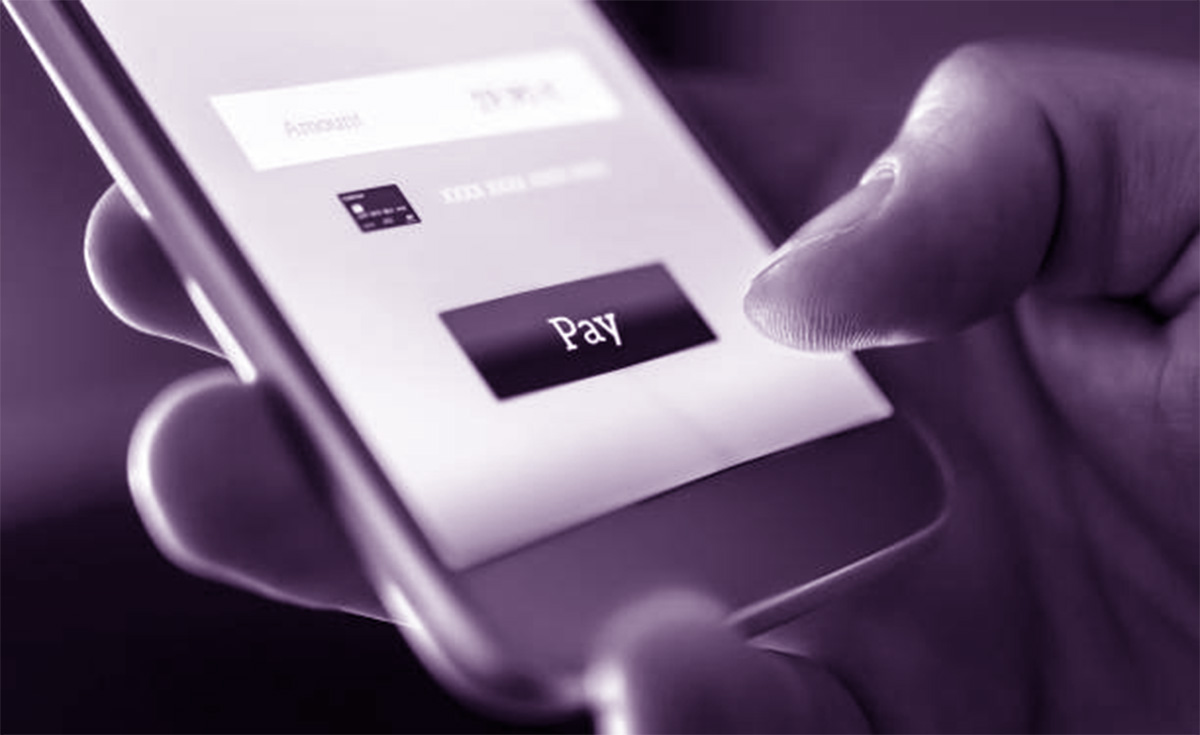
A business owner and a mother are peas in the same pod.
A baby is always on the mother's mind. Business owners' minds dwell on their products or services.
Both constantly think about nurturing their babies and helping them grow strong and successful.
But here's the slight difference:
A mother loves her child unconditionally. She doesn't care if others love her baby or not. A business owner, on the other hand, wants others to love their product.
They carry the added responsibility of convincing the world that their 'baby' is worth investing in.
And that responsibility multiplies when the business is new, and no one has heard of it yet.
The startup stage is undeniably tough.
You've built something great, but the sales just aren't coming in. Even getting a single customer can feel like climbing a mountain.
But here's the truth:
Every giant company you see today was once stuck in this exact phase - fighting to land their first 10 customers.
So, if you're struggling to get customers for your awesome product, don't worry.
This step-by-step guide will walk you through exactly how to get your first 100 customers and kick-start your revenue engine.
Be Visible. Don't Be Mysterious.
Finding customers is not much different from going out on dates.
Even someone good-looking, witty, rich - an absolute heartthrob - can still fail to land a good date or meet their soulmate.
Why?
Because they're not out there actively seeking a partner.
Startup products face the same problem.
Imagine your product, let's say, an alarm app that dials your ex's or boss's number if you don't get up. It's clever. It solves a real challenge: getting people out of bed.
But if you're not putting it out there, showing people what it can do and how it helps, you're practically a nobody.
So, step number one in getting your first 100 customers is to be public. For that, you need a solid landing page that clearly tells people what you provide and how it is beneficial to them. Without these details, consider your audience gone before you even have the chance to convince them to become your customers.
How to Create a Clean and Clear Landing Page?
Creating a clean and clear landing page is no joke. Each part of your landing page has to be carefully curated to help your customers understand what you do. For starters, follow this simple yet effective landing page template that is employed by plenty of online businesses:
-
Navigation bar: This consists of your website menu, logo, and CTAs.
-
Hero Section: This is the main section that occupies the most screen. This includes your header text, subheader text, and a hero image that has to be visually appealing.
-
Social proof: Logos of the businesses that are your customers. Or, if your business is B2C, what is the number of customers you have served?
-
Call-to-action (CTA): Clear-cut instructions to the audience on what they should do. For example, Sign up, Join the Mailing list, etc.
-
Product Features: Here, you can provide a brief explanation of what your product does.
-
Call-to-action (CTA): Yes, again! You need to encourage your audience and site visitors to take the action you want them to.
-
Footer: Miscellaneous links.
Let's see the landing page of Weebly.com.
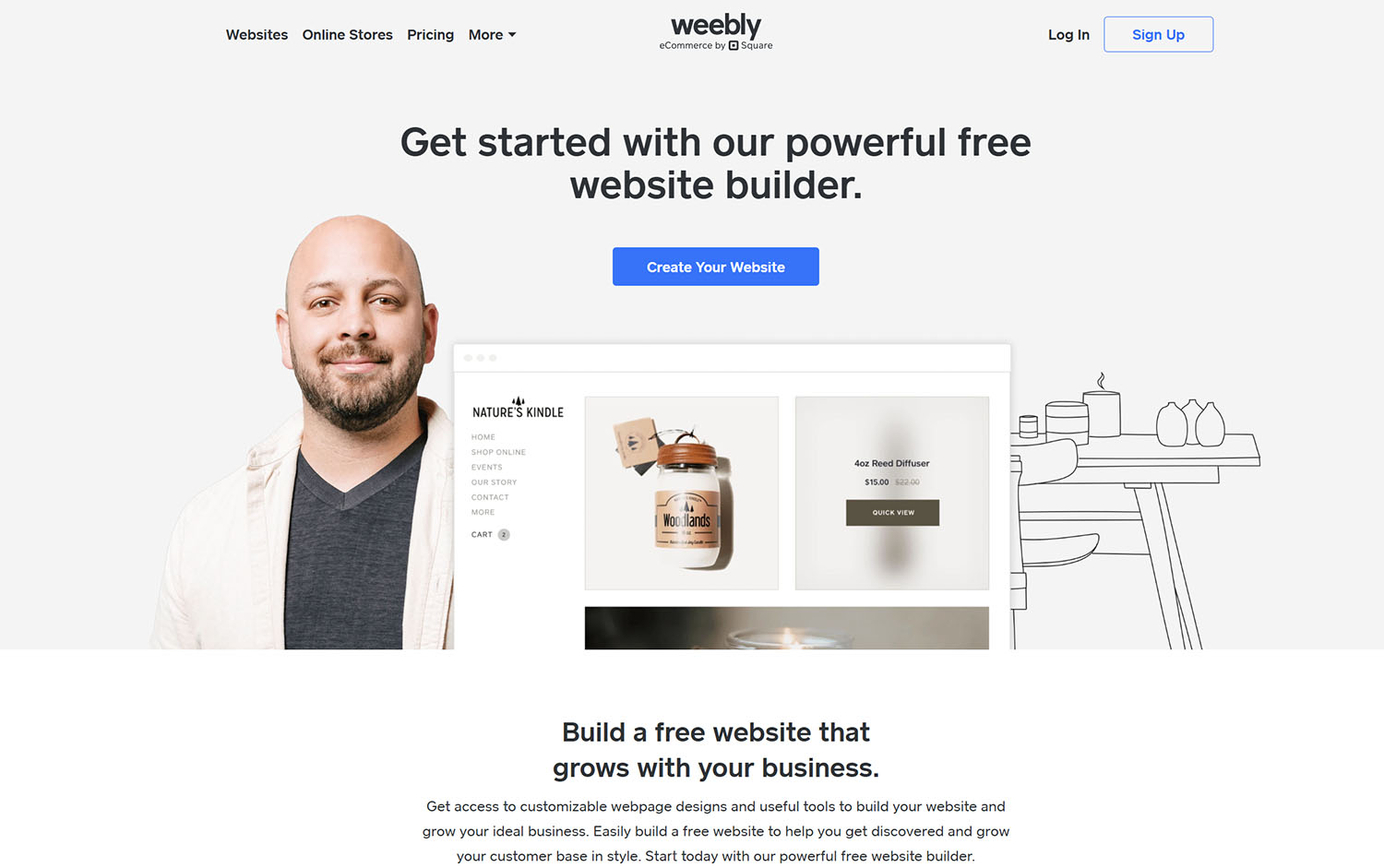
They are following the same structure. Their landing page answers all these questions:
-
Who are they?
-
What do they do?
-
Who are their customers?
-
And how can site visitors take action?
If your landing page fails to answer these questions, then it's not really a landing page. It's just another webpage that people ignore and forget about.
How to Write a Compelling Header?
Your landing page header is the first thing visitors read and, often, the last if it's not engaging. A strong header communicates your product's value in a matter of seconds. It's not the place for clever wordplay or vague mission statements. It's where you tell people exactly what you do and why it matters.
When writing your header, focus on the benefit, not the feature. Instead of saying "AI Writing Assistant," say "Write Flawless Emails in Seconds." This tells your audience what's in it for them.
Or instead of saying "Modern Solutions. Instant Growth" for a rental management company, "Get your property in front of thousands of renters. Ad free." It sounds much better and tells visitors what the company does.
Keep your header short and clear. Think 6-12 words. Use simple language active verbs, and avoid industry jargon. If your audience has to decode what you mean, they'll bounce.
Use Tiered Pricing
If you don't want potential customers to slip away, avoid flat, singular pricing. Instead, use tiered pricing; it's not just smart, it's psychological.
People want to feel like there's something made just for them, even if it's at the lowest price point. Tiered pricing works like a magnet.
It reassures users: "I don't have to spend a lot to get started-there's a plan for me."
Let's say you offer three tiers:
-
Basic: $8/month
-
Prime: $12/month
-
Pro: $20/month
At first glance, most people ignore the cheapest or most expensive options. But psychology kicks in.
The $20 Pro plan anchors the customer's sense of value; it sets a mental benchmark. Suddenly, the $12 Prime plan feels like a steal in comparison. That's the anchoring effect.
Meanwhile, the Basic plan at $8 shows there's a bare-minimum option, but it's just limited enough to make $12 feel like the sweet spot. That's the decoy effect in action; the low tier exists to make the middle tier look way more valuable.
Customers feel like they're in control, but you've already framed their thinking.
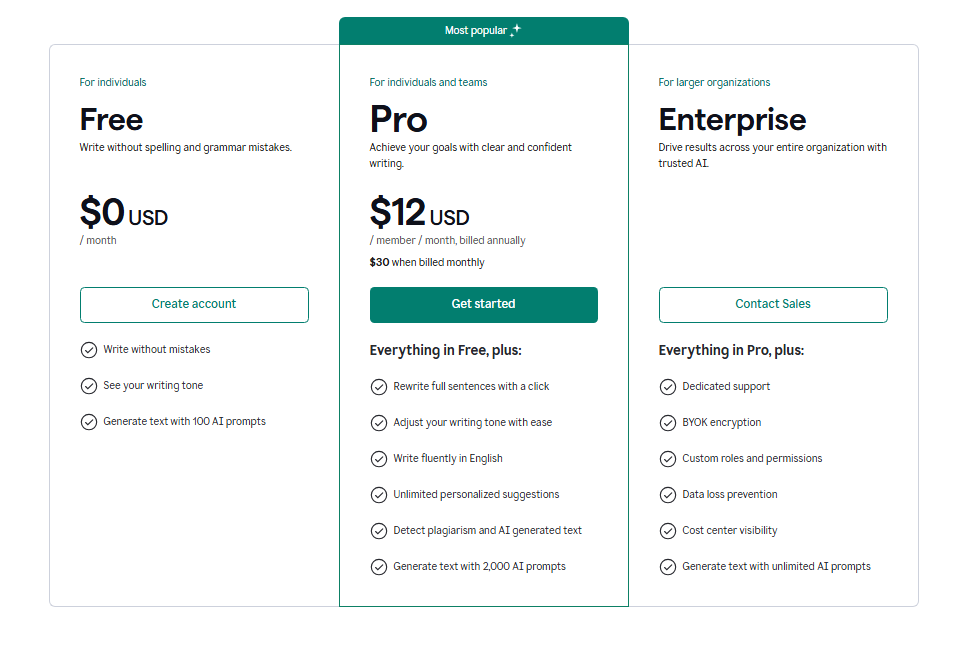
Get Social - Loudly and Proudly
You've probably heard it a million times: "Your network is your net worth." Well, here's a plus one from us-because it's not just a saying, it's a strategy, especially in today's digital world.
Thinking of starting a business but staying silent about it?
That won't work. You have to be proud and talk about what you do.
Wondering where to begin? Start with your circle, family, friends, and people who already trust you.
If the people closest to you don't know what you offer, how can you expect strangers to?
Answer: they won't.
Take Advantage of Social Platforms
You can't ignore the impact social media has on your brand.
One thing people truly enjoy is knowing what you're up to-so don't keep them in suspense for too long, or you'll kill the excitement.
Engage your audience with reels and stories that highlight your product. Make the content relatable and emotionally resonant.
Netflix is a great example of how to use social media effectively to connect with an audience. They don't just post trailers-they create engagement. By cutting scenes from movies and shows and turning them into memes, they connect with viewers who've already seen the content and get the inside joke.
Remember, you don't always have to create serious and educational content for your social media handles. Loosen a little, and don't shy away from creating memes, funny posts, or reels that make your audience chuckle. Your target is to hook your potential customer's attention. Make them know about your existence, and then promote your product.

Duolingo is another great example to keep an eye on. Their marketing is on a whole new level-hilarious yet hard-hitting.
The brand has mastered the art of turning its iconic little green owl into a viral sensation, a helpful guide, and slightly threatening to keep learning.

Teach on Reddit, Quora, LinkedIn, Twitter
Now let's shift gears and be honest-people don't like being sold to, especially when it feels forced. What they do love, though, is value.
As a brand owner, your focus should always be on value addition.
If it doesn't add value, it's a waste. It's really that simple.
Instead of pushing products, aim to solve problems. Show your potential audience that you know how to solve a particular issue. Being helpful and presenting a solution establishes your credibility in the market. People take you seriously because they know that you know your stuff.
And if you're wondering where to find real problems people care about, head over to platforms like Reddit, Quora, and Twitter. These are goldmines of unfiltered conversations where people are literally telling you what they struggle with-listen closely and try to come up with a solution.
Join Relevant Subreddits
Reddit is a double-edged sword.
It's a fantastic platform for expressing your opinion on just about anything. Still, it can turn on you fast if you come across as a salesperson.
Reddit has a strict zero-tolerance policy for sales promotion and dropping your product's links.
More importantly, Redditors are clever and real, and they expect the same from you. The best way to market on Reddit isn't by selling; it's by helping. Find subreddits in your niche and genuinely contribute to it. You can join ongoing conversations and provide your valuable output. Or you can take the lead and create a post to start the conversation.
Remember, your goal is to HELP and not SELL.
See these posts? That's what you should aim for:


Rules to remember on Reddit:
a. Be an active Redditor: Engage genuinely in discussions across subreddits and build up your karma. It boosts your credibility and trust within the community.
b. Don't start your answers with product links: This feels spammy and salesy. Always lead with value, not a pitch.
c. Play by the subreddit's rules: Every subreddit has its own guidelines. Read them carefully and stick to them to avoid getting banned or downvoted.
Psssttt...Need more tea on Reddit Marketing? Check out our detailed guide:
How to Promote a Product On Reddit Without Being Banned
Provide Spot-on Answers on Quora
Just like Reddit, Quora is the flip side of the same coin; both are opinion-based platforms, but Quora is more structured and formal in its approach.
Your goal on Quora should be to build a reputation first. Show people that you have knowledge about their problems and can offer feasible solutions to them. Once you have built your audience, TaDa! You can easily promote your brand and get customers.
The best thing about Quora is that your one well-curated and informational answer can keep bringing you customers for ages.
To get started on Quora, make sure you create an optimized profile. Think of your profile as your landing page for Quora users. It should answer all the questions about what you do and how you can help.


Once that is done, move on to your next step, which is:
Join spaces where your target audience will hang out. For example, if your product is for college students, hunt for questions that the students have posted. Similarly, if your target customers are obese people trying to get fit, find them, study their questions, and provide a genuine solution.
You can also create long posts to educate your target audience. See how Gabriel Weinberg, founder of DuckDuckGo, does it:

The more views your content attracts, the greater your chances of subtly and effectively marketing your product to a genuinely interested audience.
Threads on Twitter/ X.com
X.com is an unhinged circus at times, chaotic, raw, real - but that's exactly why it works so well for marketing.
It rewards brands that are bold, fast, and authentic, not overly polished or corporate.
If you really want to attract potential customers on X, then engage like a real person.
Ryanair nails this. The brand talks like a cheeky, unfiltered human, not a boardroom-approved bot. It's bold, lively, and always in on the joke.

Grab The Business Directly Through LinkedIn
With over 1 billion users across 200+ countries, LinkedIn is criminally underutilized by businesses.
Sure, everyone's thrilled to announce something, such as a new job, new role, or new coffee mug. But beneath all that, there are real, legitimate opportunities just sitting there. You've just got to know how to grab them.
But first, have a professional profile. Take this profile, for example:

One of the most attention-grabbing formats on LinkedIn right now?
Carousel posts. Yep, those swipe-worthy slides are gold when it comes to stopping the scroll.
They're perfect for talking about your product in a way that's short, fun, and visually pleasing. Think bold headlines, clean visuals, and just enough info to make people want more - no essay-length blocks of text required.

And don't forget the golden rule: end with a strong CTA on the last slide.

Tip: Use Canva to create your LinkedIn carousels.
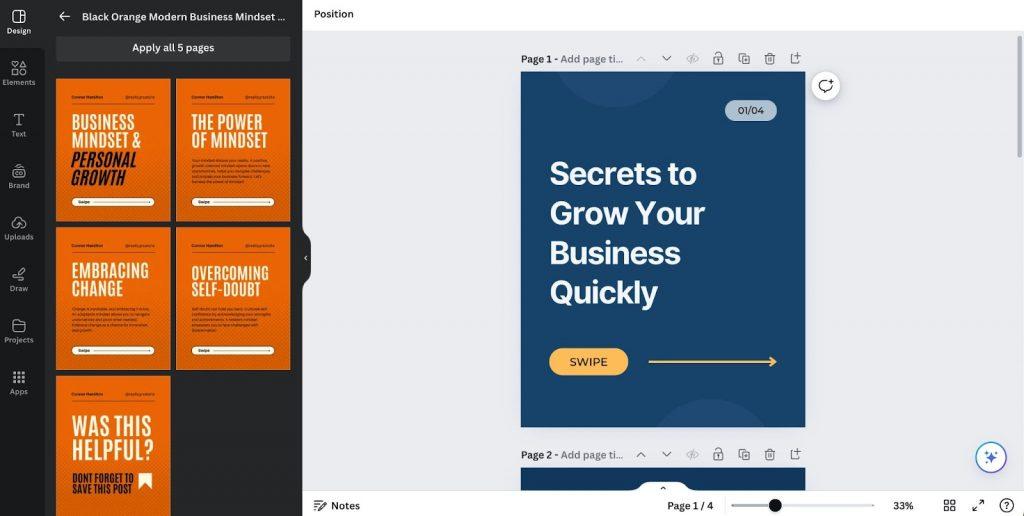
Run Micro Ads (Even on a Tiny Budget)
Let's get one thing straight - at some point, you've got to loosen the grip on your wallet.
Yes, organic marketing is powerful. Yes, great content can go far. But sometimes, even the best ideas need a little boost to break through the noise.
A small-budget marketing push isn't selling out. It's smart. It's the fuel that takes your message from a quiet whisper to something people actually hear.
Think of it like this: you've baked the cake with your content, your brand, and your voice. That small ad spends? It's the cherry on top that gets people to actually take a bite.
Guide to Create Your First Add
You don't need to pour all your fortune into running an ad. For a start, allot as little as a $5 budget for Facebook/Instagram ads.
Then, inside Meta Ads Manager, head over to the Audience section. This is where the magic happens. Define your audience based on interests, behaviors, location, age, and more.

Want even sharper targeting?
Use Custom Audiences from your email list or website visitors, or build a Lookalike Audience to reach people similar to your best customers.
Creating a Lead Magnet
If you want people to actually take action on your targeted ads, you've got to offer them something valuable. Even if they don't buy right away, you can still win by getting something in return for their contact info.
That's your golden ticket for retargeting.
Create a free guide, checklist, or resource that speaks to their needs. Use it as a lead magnet to get them to sign up.

It's a simple move that helps you grow your email list and build a pipeline of future customers who already know your value.
Lowest CPC
Bleeding money on your marketing campaign isn't a flex - even if you're reaching the right audience. It's the classic "you won, but at what cost?" moment.
Cost per click (CPC) is something you have to keep an eye on. It's not always perfect on the first go - and that's okay. Great campaigns are built on trial and error.

Run parallel ads, test different creatives, and compare the results. The goal? Find the version that gets you the most clicks for the least cash. Then double down.
Collaborate with Niche Influencers
Influencers are the hot sellers of today's market. And their followers?
They'll follow them like a preacher. That kind of trust is marketing gold, and you should absolutely tap into it.
Now, you might be thinking, "But what about the money they charge?"
Chill. We're not telling you to hire Dwayne Johnson.
Instead, look for micro-influencers in your niche - folks with 10K+ followers who have engaged, loyal audiences. Many of them are open to promoting your product in exchange for a free unit.
And... be smart when reaching out to influencers. Don't slide into their DMs with a robotic "Say this about our product." That's the fastest way to get ghosted.
Play it cool. Keep it simple and human. Say something like: "Hey, we'd love to send you our product. If you like it, feel free to share your thoughts. You can keep it, or we're happy to work out a small cut."
Now, obviously, this approach creates a little psychological nudge; they've received something of value, and most will feel naturally inclined to speak positively. No scripts, no pressure, just smart influence.
Finding the right micro-influencer for your brand isn't rocket science, seriously. It just takes a little scroll and some smart thinking.
For example, if you're promoting a pedometer app, then fitness influencers are your golden ticket. Look for creators who post about daily steps, workouts, running, or healthy habits.
How to find them?
Here's how:
Mini Guide on How to Find The Perfect Influencer for Your Brand
Let's say you're promoting a pedometer or step-tracking app. You don't want just any fitness influencer; you want someone who actually talks about walking, shares daily step goals, posts workout reels, or encourages healthy habits in their community.
So, how do you find them? Here are several effective methods:
Keyword-Based Google Search
Yep, a good old Google search still works. Use keywords like:
-
"Top micro fitness influencers on Instagram"
-
"Hiking Influencers 2025"
-
"Healthy lifestyle content creators TikTok"
-
"Micro-influencers for health brands"
Add your platform (Instagram, TikTok, YouTube) and even your target location (like "in the UK" or "in California") to narrow the results.

Hashtag Research on Social Platforms
Search for relevant hashtags on Instagram, TikTok, and even YouTube Shorts.
Try things like:
-
#10000Steps
-
#WalkingChallenge
-
#FitLife
-
#FitnessJourney
-
#MicroInfluencer
Check out who's constantly posting high-quality content under those hashtags. Look at their engagement rate, not just follower count.
Use Influencer Discovery Tools
There are platforms built specifically for this. Many are free or offer limited free access:
- Heepsy is an influencer marketing platform designed to help brands and agencies discover, evaluate, and manage influencer partnerships across various social media channels, including Instagram, YouTube, and TikTok.
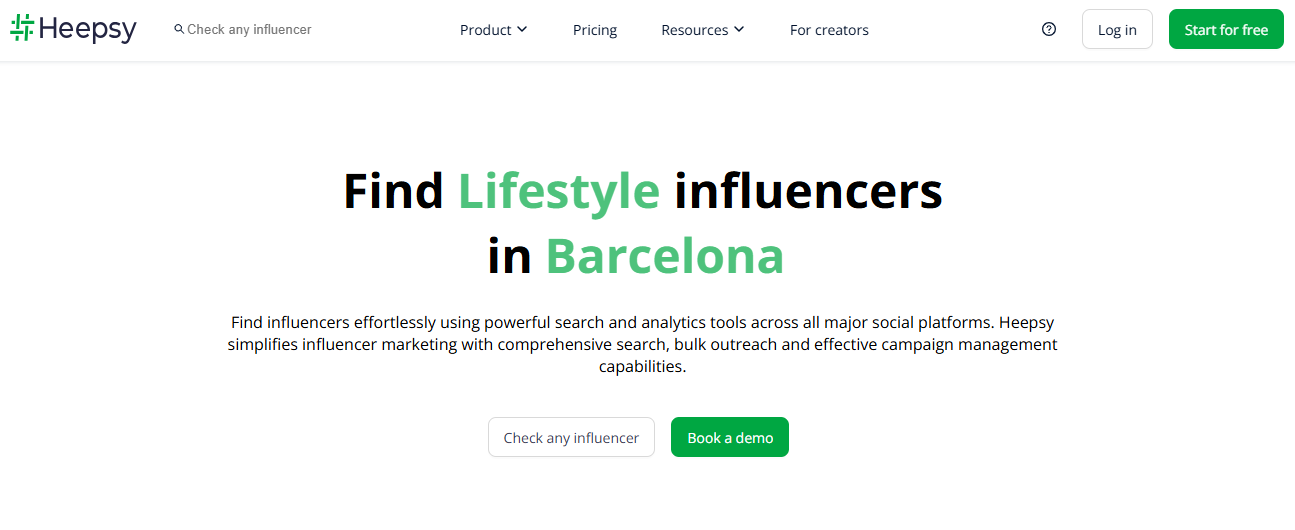
- Upfluence is particularly beneficial for brands aiming to scale their influencer marketing strategies by leveraging data-driven insights and automation.
Its comprehensive suite of tools supports brands in building authentic relationships with influencers, optimizing campaign performance, and driving revenue growth.

- HypeAuditor is an AI-powered influencer marketing platform designed to assist brands and agencies in discovering, analyzing, and managing influencer collaborations across major social media platforms, including Instagram, TikTok, YouTube, Twitch, and X (formerly Twitter).
With a database exceeding 206 million influencer profiles, HypeAuditor offers comprehensive tools to ensure authentic and effective influencer marketing campaigns.

- BuzzSumo's Influencer Discovery tool helps brands find influential content creators, journalists, and thought leaders across platforms like Twitter, YouTube, and the web. It allows you to search by topic or keyword, filter by reach, authority, and engagement, and analyze an influencer's content performance-making it easy to identify the right voices to amplify your brand's message.

You can filter influencers by niche, location, follower count, engagement rate, and platform.
Social Listening Tools
Tools like Brand24, Mention, or Sprout Social can help you track who's already talking about topics related to your product (or even your competitors). These tools monitor social mentions and can surface micro-influencers organically talking about your niche.
Check Your Own Followers
Sometimes, your next great brand partner is already following you. Check who's engaging with your content, especially if they already post about your niche. Collaborating with someone already aware of your product or values can lead to more authentic partnerships.
Look at Who Your Competitors Are Using
Audit the influencer marketing campaigns of brands similar to yours. If they've worked with someone relevant, chances are that influencers might be a good fit for your brand, too (make sure they're not exclusive).
Run Giveaways to Spark Buzz
Everyone loves free stuff.
Big brands like Netflix's Tudum are doing it... and they're not doing it just for fun. They're playing one of the smartest, most cost-effective games in marketing: creating buzz while building a loyal audience.
Remember the hit series on Wednesday?
To hype up the show and make sure it stayed in everyone's feeds and minds, Netflix ran creative giveaways, like signed posters by the cast. That wasn't just fan service. It was strategic. Giveaways drive shares, comments save, and a whole lot of tagging.
More engagement = more eyeballs


Now, you might be thinking, "Cool, but I'm not Netflix. What can I possibly give away that people would care about?" Don't sweat it. You don't need a Hollywood cast, just a thoughtful prize that your ideal customer finds valuable.
If you're a digital artist, offer custom portraits to three lucky winners.
If you're building a productivity app, give away a one-month premium subscription.
If you're launching an online course, bundle up a starter kit and give it to someone who shares your post and tags a few friends.
The key is making it easy to enter, fun to share, and tempting enough to participate in. Add a countdown to build urgency. Post user reactions to show proof. Encourage people to tag friends who'd love to win.
And boom, you've got organic reach without spending a cent on ads.
Giveaways aren't just about giving away stuff. They're about giving people a reason to care, talk, and show up.
And if billion-dollar companies are doing it to win attention in a saturated world... what's stopping you?
Set Up Referral Codes or an Affiliate Program
For your just-born brand, it's all about creating a win-win for you and your customers.
And guess what?
Affiliate programs are a smart, low-cost way to make that happen.
Turn your first ten customers into your personal sales squad. Offer them a 20-30% commission for every successful referral they bring in.
It's simple: they win, you grow, and your brand starts building real momentum powered by people who already love what you do.
If you think affiliate programs don't work, think again. Even giants like Grammarly swear by them.

And how can we not mention Amazon here?

Affiliate programs are not just a way to spread the word; they turn happy customers into brand advocates while bringing in fresh eyes and rewarding loyal ones at the same time.
Cold DMs - Done Right
Cold DMs can actually work wonders if you play them right. The key? Don't come off as pushy or intrusive. Keep it natural, respectful, and human.
"Hey, check out my product. It's amazing. You should buy it."
What would you do? You'd hit the block faster than you can say "spam." It's lazy, pushy, and completely lacks context or a personal touch.
What is the smart way to slide into DMs?
Target with intention. Don't go messaging everyone under the sun; that's spam, not a strategy. Be super selective. Pick 20-30 profiles that are active and genuinely aligned with your niche.
Once you've got your list, ditch the sales pitch. Instead, keep it human and honest. Something like:
"Hey Sam, I just came across your profile. I love the content you're sharing on fitness! I noticed you're into wellness and workouts, and I recently launched a smart pedometer app. I would love to hear your thoughts on it if you have time to check it out!"
This one feels short, friendly, and, most importantly, not annoying.
Collect and Flaunt Social Proofs
Put yourself in your customer's shoes for a second. Why should anyone buy from a brand they've never heard of?
Is it a big-name brand? Does it have glowing reviews?
These are the questions that run through every buyer's mind. No matter how amazing your product is, if there's no buzz, no proof, and no chatter around it, sales will crawl.
It's the customer's instinct to Google the product and look for reviews, and naturally, they hope to see positive ones. If you're not giving them that reassurance, you're already one step behind.

As a new brand, one of your top priorities should be collecting positive reviews; they build trust and boost credibility fast.
But let's be real: you can't just beg people to leave glowing feedback. Instead, play it smart. After someone makes a purchase, send a friendly follow-up email, not pushy, just a gentle nudge inviting them to share their honest thoughts on third-party sites like Trustpilot, Reviews.io, or Slashdot.org.
It's subtle, professional, and way more effective than asking outright. For example:

Track What Works, Drop What Doesn't
Building a loyal customer base isn't just about having a great product; it's about showing up, listening, and evolving with your audience.
Forget the "set it and forget it" mindset. You've got to stay in the game. Test what works, change what doesn't, and don't be afraid to try something new. Your people will notice when you care enough to improve.
Even Netflix changed itself. It started as a DVD rental service and evolved into a global streaming giant because it adapted to what people wanted.
And hey, we get it. You want growth fast. But loyalty isn't built in a day.
Even giants like Zoom, Netflix, and Shopify started small. What helped them grow? Trust, consistency, and connection.
So keep building. Talk to your customers. Learn from them.
And keep your network alive because real relationships are what turn first-time buyers into lifelong fans.


